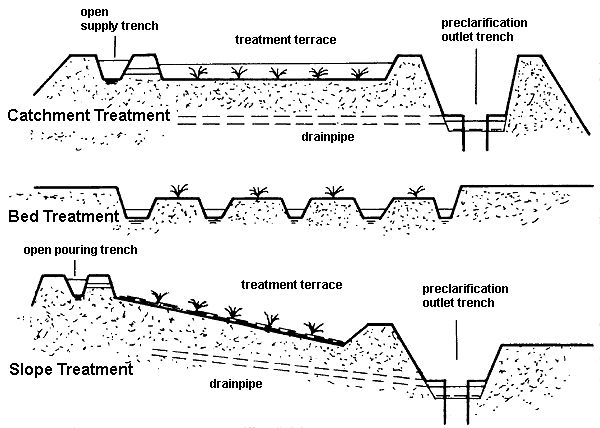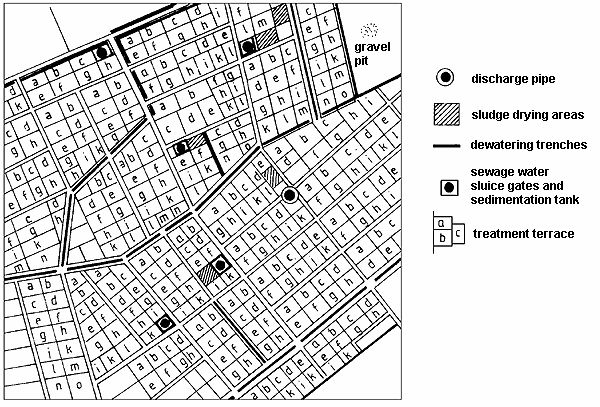Waste waters from Berlin households and streets were drained by a primitive gutter drainage system up into the 1870’s. There were years of dispute over which process should be chosen for urban dewatering and sewage disposal. Field treatment of sewage and its parallel use for agricultural areas was generally accepted as the most favourable form of sewage disposal. A total of 12,500 ha were adapted for 20 official sewage farms and two smaller sites used for field treatment of sewage. The city of Berlin had bought the land for the fields and still owns most of them today.
The establishment of sewage treatment plants in Berlin led to the closure of the great majority of sewage farms by the middle of the 1980’s. Large areas of sewage farms were built-up within Berlin, in Marzahn, Hellersdorf, and Hohenschönhausen; or reforested, as around Buch forest at the end of the 1980s. By 1998, the final sewage farms had been shut down in their original use. Until 2010, the Berlin Water Works (BWB) carried out elution studies (an investigation in the field of environmental chemistry to extract adsorbed substances) to discharge clear water on the fields of the Karolinenhöhe sewage farm, in the district of Gatow. Many of the former sewage farm areas are now used for purposes of agriculture and forestry. Both the nutrients and pollutants in waste water are accumulated in sewage farm soils. This accumulation in closed sewage farms has disadvantages for current uses and, because of the size of the areas, far-reaching consequences on the economy of nature.
Former sewage farms remain important spaces for urban development in the future. A diversity of concepts, some of them competing, have already been discussed for use of the remaining surfaces as residential areas, industrial parks, recreation spaces or for ground water accumulation. Being aware of the specific pollution connected to sewage farms, information about the location and extent of former sewage farms forms an important planning basis for assessing the soils need for protection and for avoiding future conflict regarding use.


